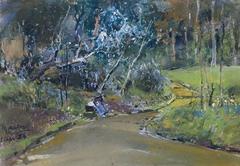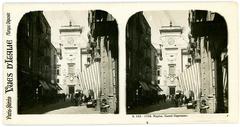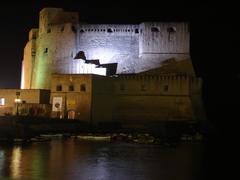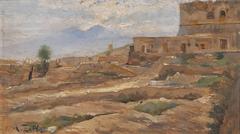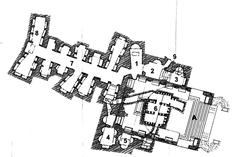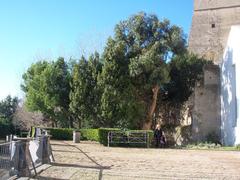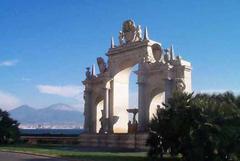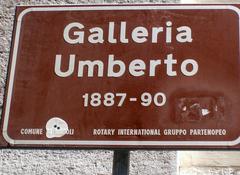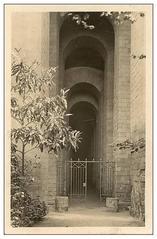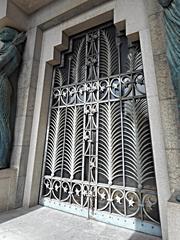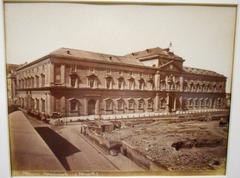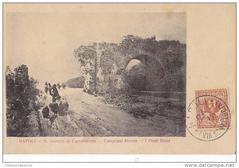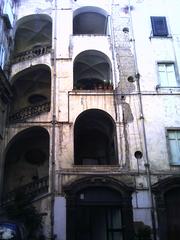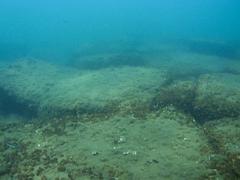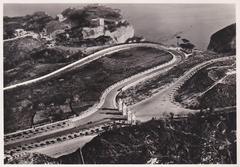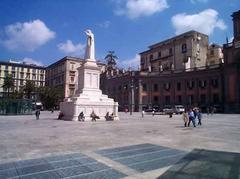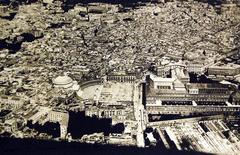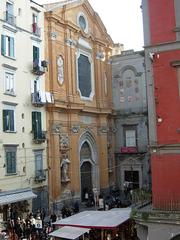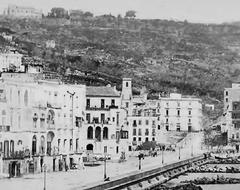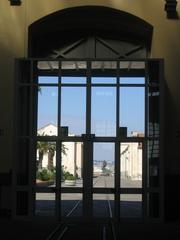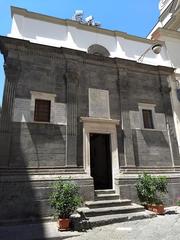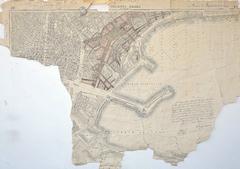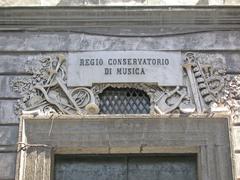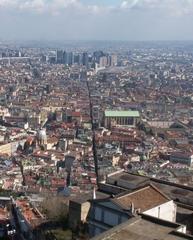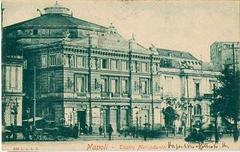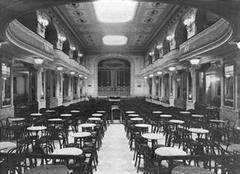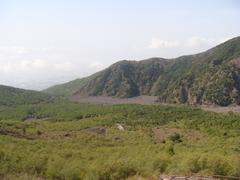Naples Underground Exploration: La Napoli Sotterranea Guide
Date: 18/07/2024
Introduction to La Napoli Sotterranea
Naples, Italy, a city renowned for its rich history and vibrant culture, conceals beneath its bustling streets a hidden marvel known as La Napoli Sotterranea or Naples Underground. This subterranean labyrinth, steeped in millennia of history, offers a unique glimpse into the past, tracing the city’s evolution from its ancient Greek and Roman roots to the present day.
The tunnels and chambers of La Napoli Sotterranea are not merely remnants of bygone eras but are living records of the ingenuity and resilience of the Neapolitan people. Visitors to this underground world can witness firsthand the architectural and engineering feats that have withstood the test of time, from ancient aqueducts and cisterns to wartime shelters and catacombs.
The ongoing efforts to excavate and preserve these subterranean spaces have unearthed a wealth of artifacts and structures, providing invaluable insights into the daily lives of those who once inhabited this hidden realm. As a popular tourist destination, La Napoli Sotterranea continues to captivate visitors with its blend of history, mystery, and cultural significance.
This report delves into the intricate history, architectural marvels, and modern-day relevance of La Napoli Sotterranea, offering comprehensive visitor information and exploring the impact of tourism on this extraordinary site. (University of Naples Federico II, Roman Aqueducts, Catacombs of Naples, The National WWII Museum, Napoli Underground)
Table of Contents
- Introduction
- History and Origins
- Visitor Information
- Architectural Marvels
- Impact of Tourism
- Conclusion
- FAQ
- References
History and Origins
Greek and Roman Foundations
The story of La Napoli Sotterranea begins with the Greeks, who, around the 6th century BC, established Neapolis (New City) and began quarrying the soft volcanic tuff to build their city walls and structures. These initial excavations formed the first levels of what would become La Napoli Sotterranea. (University of Naples Federico II)
The Romans, known for their engineering prowess, expanded the network significantly. They utilized it for:
- Water Management: The creation of aqueducts, cisterns, and water channels ensured a reliable water supply for the burgeoning Roman city above. Systems like the Aqua Augusta brought water from as far as Serino, 96 km away. (Roman Aqueducts)
- Building Material: The tuff extraction continued, providing the raw material for the construction of grand Roman buildings and villas.
- Underground Passageways: Passages, known as “cryptoporticus,” facilitated movement within the city, especially during times of siege or unrest.
From Catacombs to Shelters
With the decline of the Roman Empire, the underground took on new roles. Early Christians used the tunnels as catacombs, creating intricate burial chambers and leaving behind poignant frescoes and religious iconography. The Catacombs of San Gennaro and San Gaudioso are powerful reminders of this era. (Catacombs of Naples)
During World War II, Neapolitans sought shelter from Allied bombing raids in the tunnels. These experiences left an indelible mark on the city’s collective memory. (The National WWII Museum)
Rediscovery and Restoration
After the war, much of La Napoli Sotterranea lay forgotten, filled with debris and largely inaccessible. However, in the 1950s, a group of dedicated individuals, led by archaeologist Amedeo Maiuri, began the arduous task of excavation and restoration. (Napoli Underground)
Their efforts revealed the vastness and historical significance of the underground city. Today, visitors can explore a carefully curated section of La Napoli Sotterranea, witnessing firsthand the layers of history etched into its walls.
Visitor Information
Visiting Hours and Tickets
To visit La Napoli Sotterranea, it’s essential to plan ahead. Here’s what you need to know:
- Visiting Hours: The site is open daily from 10:00 AM to 6:00 PM.
- Tickets: Tickets can be purchased online or at the entrance. Prices are €10 for adults, €8 for students, and €5 for children.
- Guided Tours: Guided tours in multiple languages are available and highly recommended to fully appreciate the site’s history and significance.
- Special Events: Check the official website for information on special events and temporary exhibitions.
Travel Tips
- Comfortable Footwear: Wear comfortable shoes as the terrain can be uneven and the tour involves a fair amount of walking.
- Light Jacket: The underground tunnels can be cool, so a light jacket is advisable.
- Photography: Photography is allowed, but be mindful of the rules and respect the site’s historical significance.
Nearby Attractions
- Naples National Archaeological Museum: Home to an extensive collection of Greco-Roman artifacts.
- Spaccanapoli: A historic street that cuts through the heart of Naples, offering a glimpse into the city’s vibrant culture.
- Naples Cathedral: Also known as the Cathedral of San Gennaro, a stunning example of Gothic architecture.
Accessibility
While efforts have been made to make La Napoli Sotterranea accessible, some areas may not be suitable for visitors with mobility issues due to the nature of the terrain. It’s advisable to check with the site ahead of your visit for specific accessibility information.
Architectural Marvels
Quarrying Techniques
The creation of Napoli Sotterranea is intrinsically linked to the quarrying of Neapolitan Yellow Tuff, a volcanic rock prized for its strength and ease of extraction. The quarrying process, known as “cut and cover,” involved digging deep trenches and extracting the tuff in large blocks. This method had a lasting impact on the city’s layout, influencing the location of streets and buildings above.
Evolution of Underground Spaces
The earliest uses of Napoli Sotterranea were primarily utilitarian. The Romans utilized the excavated spaces as cisterns. These vast underground reservoirs, like the Piscina Mirabilis in nearby Bacoli, collected and stored rainwater. With the advent of Christianity, the underground chambers took on a more somber role, becoming extensive catacombs like the Catacombs of San Gennaro.
Navigating the Labyrinth
Navigating Napoli Sotterranea is akin to traversing a labyrinth frozen in time. The network of tunnels, some as narrow as a meter wide, wind their way through the bedrock, connecting chambers of varying sizes and purposes. The air, cool and damp, carries the scent of earth and history. The walls, often bare and rough-hewn, bear witness to the laborious process of extraction.
Structural Pillars
One of the most striking features of Napoli Sotterranea is the presence of massive pillars, strategically placed throughout the network. These pillars, carved from the same tuff as the surrounding rock, serve a crucial structural purpose, supporting the weight of the city above. The Romans employed various techniques to create these pillars, showcasing their engineering ingenuity.
Adaptations through the Ages
Over the centuries, Neapolitans adapted and repurposed these underground spaces for a multitude of uses. During World War II, the tunnels served as bomb shelters, providing refuge from Allied air raids. Evidence of this period, including graffiti and inscriptions, can still be seen on the walls.
Archaeological Discoveries
Napoli Sotterranea is not just a historical curiosity; it’s an active archaeological site. Excavations continue to unearth artifacts and structures, shedding light on the lives of the people who lived and worked in this subterranean world. Recent discoveries include ancient Roman artifacts, such as oil lamps and pottery fragments.
Impact of Tourism
Economic Benefits
Tourism related to Napoli Sotterranea contributes significantly to the local economy. The site attracts a large number of visitors, generating revenue through ticket sales, guided tours, and souvenir shops. This income supports local businesses and creates employment opportunities in the tourism sector.
Preservation and Conservation
Tourism revenue plays a crucial role in funding the preservation and conservation of Napoli Sotterranea. The funds are used for ongoing maintenance, restoration projects, and archaeological research, ensuring the site’s long-term survival and accessibility for future generations.
Infrastructure Development
The influx of tourists has led to improvements in the infrastructure surrounding Napoli Sotterranea. Access points have been upgraded, signage has been improved, and public transportation options have been expanded.
Community Engagement
Tourism has fostered a sense of pride and awareness among the local community regarding the historical significance of Napoli Sotterranea. Residents are increasingly involved in preserving their heritage.
Challenges of Tourism
While tourism brings numerous benefits, it also presents challenges that need to be addressed to ensure the sustainable management of Napoli Sotterranea.
Overcrowding
The popularity of the site, particularly during peak tourist seasons, can lead to overcrowding in the tunnels. This can negatively impact the visitor experience and potentially damage the fragile historical structures. Implementing measures such as timed entry slots and limiting group sizes can help mitigate overcrowding.
Environmental Impact
The high volume of visitors can impact the delicate microclimate of the underground environment. Factors such as increased humidity and carbon dioxide emissions from human presence can accelerate the deterioration of the historical structures. Implementing sustainable tourism practices, such as promoting off-peak visits and raising awareness about responsible behavior within the site, is crucial.
Balancing Preservation and Access
Finding the right balance between preserving the historical integrity of Napoli Sotterranea and ensuring public access is an ongoing challenge. It’s essential to implement measures that allow visitors to experience the site without compromising its long-term preservation.
Authentic Representation
As Napoli Sotterranea gains popularity, it’s important to ensure that its history and significance are presented authentically and respectfully. This involves providing accurate information and engaging with local communities to incorporate their perspectives and stories into the visitor experience.
Conclusion
La Napoli Sotterranea stands as a testament to the enduring spirit and adaptability of Naples, embodying a multifaceted history that spans from ancient Greek and Roman civilizations to modern times. This subterranean network has served various purposes over the centuries, from water management and quarrying to catacombs and wartime shelters.
The meticulous excavation and preservation efforts have not only safeguarded this historical treasure but also transformed it into a dynamic tourist destination that attracts visitors from around the globe. The economic benefits of tourism have facilitated further conservation and research, ensuring that future generations can continue to explore and learn from this underground marvel.
However, the challenges of managing visitor impact and maintaining the integrity of the site underscore the need for sustainable tourism practices. As we continue to uncover the secrets of Napoli Sotterranea, it remains a powerful symbol of human ingenuity and resilience, offering a unique window into the past and an enduring source of inspiration. By balancing preservation with accessibility, La Napoli Sotterranea will continue to captivate and educate visitors, fostering a deeper appreciation for the rich cultural heritage of Naples. (Napoli Sotterranea Official Website)
FAQ
Q: What are the visiting hours for La Napoli Sotterranea?
A: The site is open daily from 10:00 AM to 6:00 PM.
Q: How much do tickets cost?
A: Tickets are €10 for adults, €8 for students, and €5 for children.
Q: Are guided tours available?
A: Yes, guided tours in multiple languages are available and highly recommended.
Q: Is Napoli Sotterranea accessible for people with disabilities?
A: Some areas may be challenging for visitors with mobility issues. It’s best to check in advance with the tour operators.
References
- University of Naples Federico II. (n.d.). University of Naples Federico II
- Roman Aqueducts. (n.d.). Roman Aqueducts
- Catacombs of Naples. (n.d.). Catacombs of Naples
- The National WWII Museum. (n.d.). The National WWII Museum
- Napoli Underground. (n.d.). Napoli Underground
- Napoli Sotterranea Official Website. (n.d.). Napoli Sotterranea Official Website
